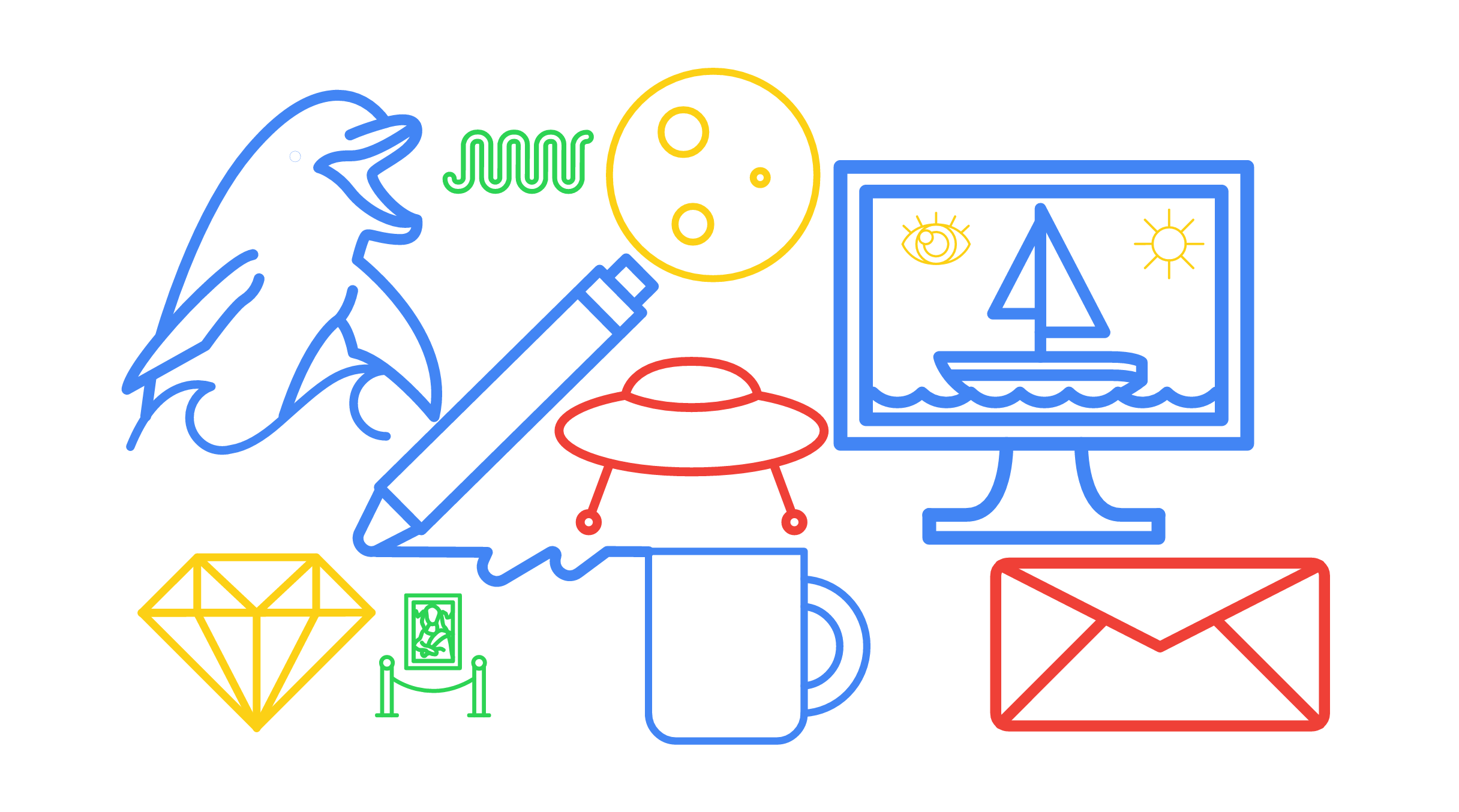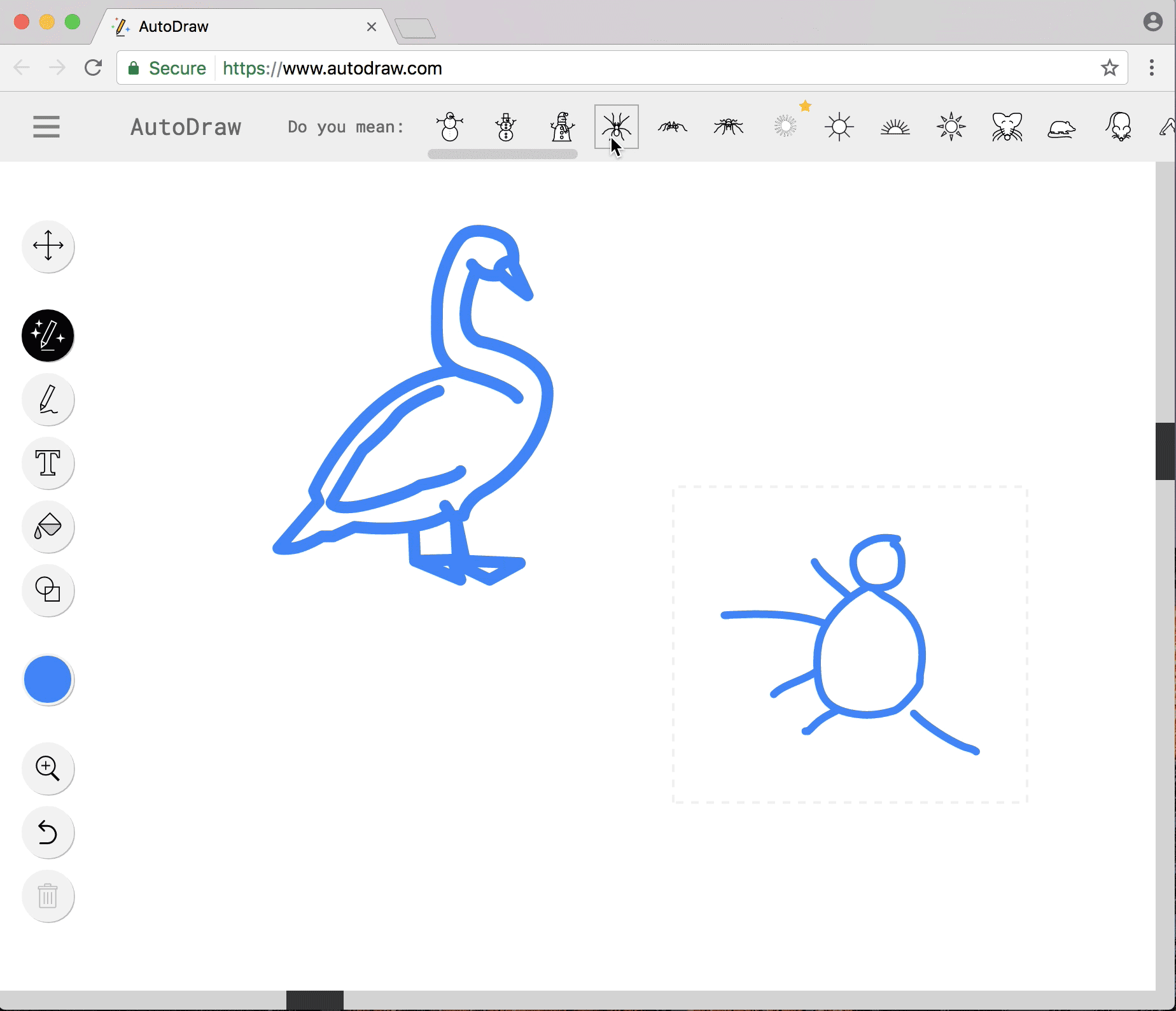Google’s AI Turns Your Crappy Doodles Into Proper Pictures

You no longer need to worry if your drawing is awful, because Google’s neural networks have your back—some of the time, at least.
The company has just launched a new tool called AutoDraw, which you can think of as Microsoft Paint but with a hulking synthetic brain beneath its plain-looking interface. Draw some squiggles using a rudimentary pen tool via your mouse or touchpad, and the app will provide a list of possible images that it thinks you were trying to render on-screen. Choose one, and your scribbling is replaced with an image that was created by people that can really draw.
The software is in fact based on the technology that underlies Google’s previous doodling experiment, Quick, Draw!. That was a game in which players were asked to draw six simple objects in 20 seconds while its character-recognition AI attempted to identify them. Fun, for sure—but also a ruse to gather large quantities of data as you chuckled at your bad drawings and the computer’s inability to decipher them. With more data in hand, Google’s AI now appears able to work as a recommendation tool rather than a game.

On the surface this may all seem a little silly. But the technology is really part of wider push to have computers understand the complex and unreliable communications of humans. And Google certainly isn’t alone in trying to crack the problem: at MIT Technology Review’s EmTech Digital conference last month, AI firm Gamalon described how it was developing new ways to identify similar scribbling using less training data than traditional AI approaches.
For now, though, if you want to see how good these things are you'll have to try AutoDraw for yourself. The results are likely to be mixed: it guessed my questionable frog at first blush, but thought my rabbit was a toilet. Even our art assistant, Bryan Fountain, demonstrated that an art school education doesn't guarantee success when his doodle of a bird was misidentified as the Eiffel Tower.
(Read more: AutoDraw, “Want to Understand AI? Try Sketching a Duck for a Neural Network,” “When Machines Have Ideas”)
Keep Reading
Most Popular
Large language models can do jaw-dropping things. But nobody knows exactly why.
And that's a problem. Figuring it out is one of the biggest scientific puzzles of our time and a crucial step towards controlling more powerful future models.
How scientists traced a mysterious covid case back to six toilets
When wastewater surveillance turns into a hunt for a single infected individual, the ethics get tricky.
The problem with plug-in hybrids? Their drivers.
Plug-in hybrids are often sold as a transition to EVs, but new data from Europe shows we’re still underestimating the emissions they produce.
Stay connected
Get the latest updates from
MIT Technology Review
Discover special offers, top stories, upcoming events, and more.